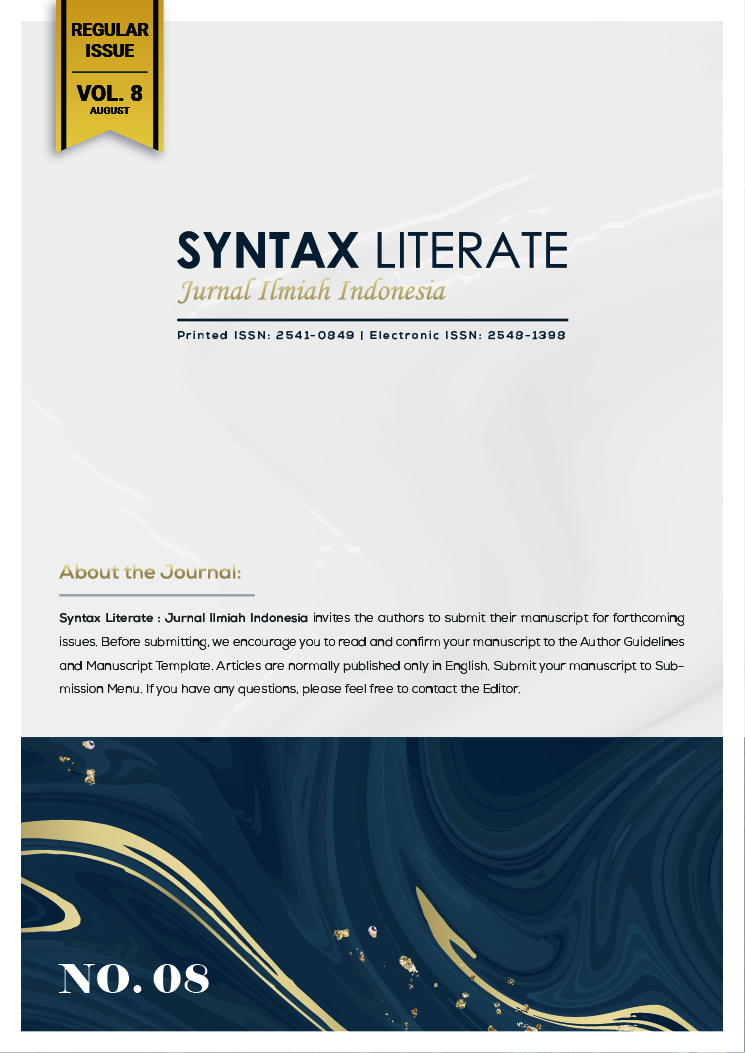The Influence of Lecturers' Persuasive Communication on Self-Confidence and Learning Motivation of Buddhist College Students
Abstract
This quantitative research aims to determine the contribution of lecturers' persuasive communication to students' self-confidence and learning motivation. The study population was students of Jinarakkhita Buddhist College of Lampung. The sampling technique was carried out by random sampling with the number of selected samples as many as 78 people. The research data were collected using the lecturer's persuasive communication scale, self-confidence scale, and learning motivation scale. The data analysis technique used was multivariate analysis of variance (MANOVA). Analysis of research data showed that there was a positive contribution between persuasive communication and self-confidence. It is also known that there is a positive contribution between persuasive communication and learning motivation. Specifically, it is known that in this study, lecturers' persuasive communication is high, students' self-confidence is moderate, and students' learning motivation is also moderate.
Downloads
References
Amin, A. (2023). The Government’s Persuasive Communication Strategy in Preventing the Spread of the Covid-19 Virus in Indonesia. Jurnal Eduhealth, 14(01), 51–57.
DÃaz, S., Demissew, S., Carabias, J., Joly, C., Lonsdale, M., Ash, N., Larigauderie, A., Adhikari, J. R., Arico, S., & Báldi, A. (2015). The IPBES Conceptual Framework—connecting nature and people. Current Opinion in Environmental Sustainability, 14, 1–16.
Geertz, C. (2013). Religion as a cultural system. In Anthropological approaches to the study of religion (pp. 1–46). Routledge.
Hamandia, M. R., & Razzaq, A. (2019). Strategi Komunikasi Persuasif dengan Metode Kisah dalam Meningkatkan Motivasi Belajar Mahasiswa Program Studi Komunikasi dan Penyiaran Islam UIN Raden Fatah Palembang. Jurnal Komunikasi Islam Dan Kehumasan (JKPI), 3(2), 175–187.
Mehto, V., Riikonen, S., Kangas, K., & Seitamaa-Hakkarainen, P. (2020). Sociomateriality of collaboration within a small team in secondary school maker-centered learning project. International Journal of Child-Computer Interaction, 26, 100209. https://doi.org/10.1016/j.ijcci.2020.100209
Purba, B. D. (2020). Ilmu Komunikasi Sebagai Pengantar. Yayasan Kita Menulis.
Risnawita, N. G. dan R. (2010). Teori-Teori Psikologi. ArRuzz Media.
Sarmiati, D. (2023). Penerapan komunikasi persuasif pimpinan untuk meningkatkan kedisiplinan dan motivasi mahasiswa di stai-ydi lubuk sikaping. 180–189.
Sikumbang, A. T., Effendy, E., & Husna, U. (2019). Efektifitas Komunikasi Persuasif Penyuluh Agama Islam Dalam Pembinaan Majelis Taklim Kota Langsa. At-Balagh, 3, 30–47.
Velentzas, J., & Broni, G. (2014). Communication cycle: Definition, process, models and examples. Recent Advances in Financial Planning and Product Development, 17, 117–131.
Warren, C., Becken, S., & Coghlan, A. (2019). Using persuasive communication to co-create behavioural change–engaging with guests to save resources at tourist accommodation facilities. In Marketing for Sustainable Tourism (pp. 67–86). Routledge.
Zubaidah, A. (2014). Psikologi Pembelajaran Matematika. Buku Beta.
Copyright (c) 2023 Sidartha Adi Gautama, Wistina Seneru

This work is licensed under a Creative Commons Attribution-ShareAlike 4.0 International License.











